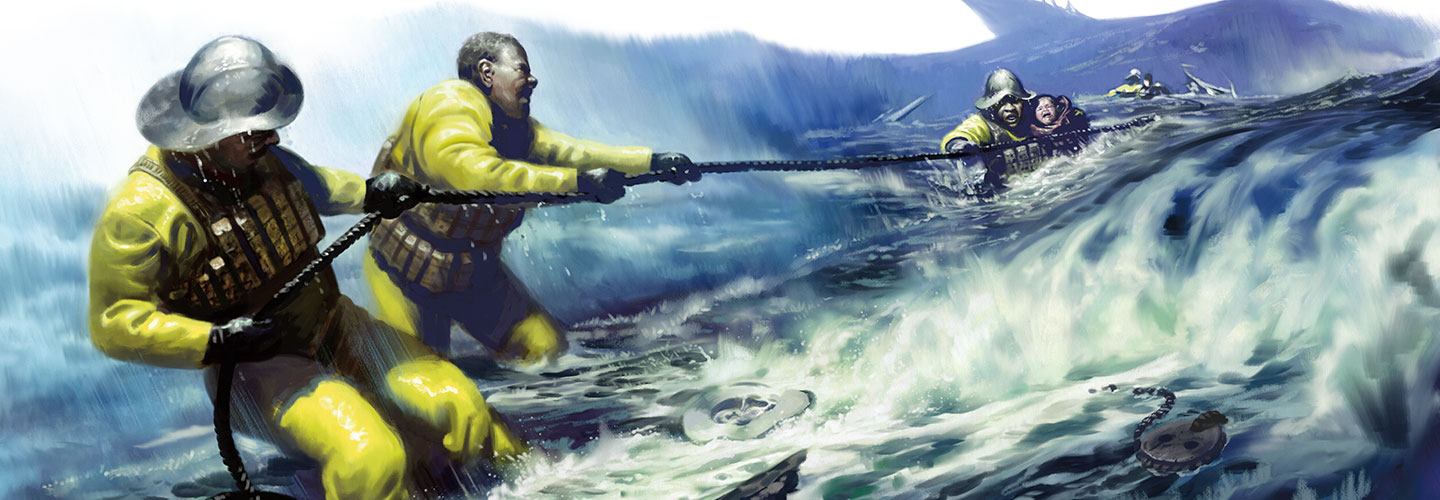More than 100 years ago, on October 11, 1896, a terrifying hurricane struck the Atlantic Coast. Strong winds and huge waves blew the E.S. Newman 100 miles off course. Badly damaged, the ship sent up distress flares off the Outer Banks in North Carolina.
Luckily, Theodore Meekins spotted the flares. He was a member of the Pea Island Lifesavers. The Lifesavers were one of hundreds of crews that responded to water-based disasters on U.S. coasts. But the Pea Island Lifesavers were unique: They were the only all-black crew.
On October 11, 1896, a terrifying hurricane struck the Atlantic Coast. The powerful storm had strong winds. The winds blew a ship called the E.S. Newman 100 miles off course. The badly damaged ship sent up distress flares off the Outer Banks in North Carolina.
Theodore Meekins spotted the flares. He was a member of the Pea Island Lifesavers. The Lifesavers were one of hundreds of crews that responded to water-based disasters on U.S. coasts. But the Pea Island Lifesavers were unique. They were the only all-black crew.

